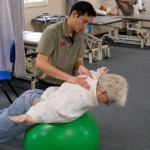The least movement is of importance to all nature. The entire ocean is affected by a pebble. ~Blaise Pascal, French Mathematician, Physicist, and Philosopher (1623-1662)
 In fifth grade I received a most daunting assignment: pick a career, shadow a professional, and prepare a table for a “career fair” to showcase my newfound professional expertise. I’ll give you a hint: my table didn’t feature “career advisor” as my selected vocation. I don’t know many people who knew their callings in fifth grade; actually, I don’t know many people who would say they know their callings now. I imagine the same is true for many graduating seniors here at Puget Sound; that same daunting assignment—to pick a career, get career related experience, and execute the plan—lingers over most students I meet with these days. The good news is: you don’t actually have to settle on anything, except a place to start.
In fifth grade I received a most daunting assignment: pick a career, shadow a professional, and prepare a table for a “career fair” to showcase my newfound professional expertise. I’ll give you a hint: my table didn’t feature “career advisor” as my selected vocation. I don’t know many people who knew their callings in fifth grade; actually, I don’t know many people who would say they know their callings now. I imagine the same is true for many graduating seniors here at Puget Sound; that same daunting assignment—to pick a career, get career related experience, and execute the plan—lingers over most students I meet with these days. The good news is: you don’t actually have to settle on anything, except a place to start.
Back in fifth grade, I chose “physical therapist” as my career du jour. I didn’t know what a physical therapist did or how to become one, but as assigned, I shadowed a professional in the field. What I remember about that day was all of the cool equipment in the facility: treadmills, balance bars, yoga balls, exercise bands, weights, and all the other tools of torture dreaded by an inactive ten-year-old. Still, I admired that physical therapists helped people to improve their lives. For the purposes of my table, including poster board and shoebox diorama, that worked for me.
US News & World Report (May 2010) recently named physical and occupational therapists to its list of The 50 Best Careers, citing good pay, high activity level, moderate stress, and strong projected job growth. With a growing population of injured veterans and an aging boomer population, careers in each field are forecast to grow and remain strong in the coming years. There is a highly respected population of Puget Sound graduate students who study either physical or occupational therapy. What do PTs and OTs do and what is the difference between the two professions?
Physical Therapists
Physical therapists work with clients on issues of strength, muscle and joint pain, flexibility, joint range of motion, endurance, and motor functioning. According to the Bureau of Labor Statistics, PTs diagnose and treat individuals of all ages who have health-related conditions that limit their abilities to move and perform activities as well as they would like in their daily lives. In addition, PTs work with individuals to prevent the loss of functionality by developing fitness-oriented strategies to improve quality of life.
Occupational Therapists
Yes, occupational therapy is different from physical therapy. While occupational therapists also treat physical issues that cause limitations, they focus on helping clients of all ages improve functionality in living and working situations. The OT helps clients with physical, developmental, emotional, and psychological conditions to improve fine motor functioning and reasoning abilities through the restoration of function or compensation for a permanent loss of function. Additionally, OTs help people coping with substance abuse, eating disorders, depression, and life skills development.
Students considering a career in physical or occupational therapy should visit the pages for the School of Occupational Therapy or the School of Physical Therapy to learn more about the academic requirements for entering a physical therapy graduate program and what classes to consider taking during an undergraduate program to prepare for advanced study.
Getting Experience as an Undergrad
Undergraduate students seeking career-related experience in physical or occupational therapy have a number of options, including but not limited to:
Part-time jobs: Get some experience working in a healthcare setting, like a hospital, nursing home, or physical therapy facility. Or, consider working in a gym, getting a personal training or fitness instructor certification, or coaching youth sports. Check out LoggerJobs on Cascade for some current opportunities or make an appointment with a career advisor to explore options.
Informational Interviews: Use the Alumni Sharing Knowledge (ASK) Network on Cascade to identify physical or occupational therapists and contact them to ask for an informational interview to learn more about the profession. Information to help you make contact and have a successful informational interview can be found through the Career and Employment Services website.
Internships: Use the National Internships Consortium (NIC) on Cascade to identify possible internship opportunities with a physical or occupational therapist or at a company in a related field. The opportunities listed on NIC are just a drop in the bucket. Need help identifying more possibilities? Contact CES!
Read Up: Check out a book in the CES Career Resource Library, like Opportunities in Occupational Therapy Careers, or Opportunities in Physical Therapy Careers. For a broader survey of careers in the health professions, there is Career Opportunities in Health Care, among others.
Online Resources: Find more information, including the sources of most of the information in this post, through the following links:
American Occupational Therapy Association
American Physical Therapy Association
Bureau of Labor Statistics-Occupational Therapy
Bureau of Labor Statistics-Physical Therapy
© 2010 Career and Employment Services, University of Puget Sound
Photo: Ross Mulhausen